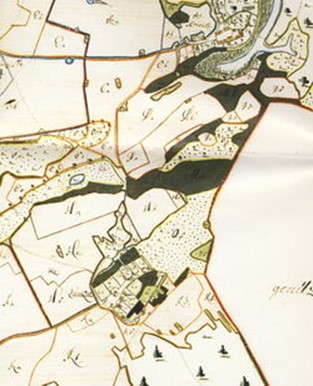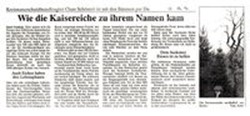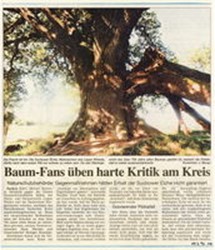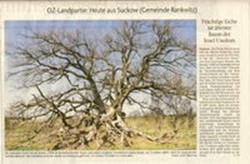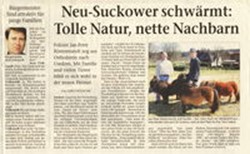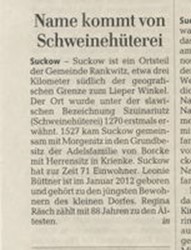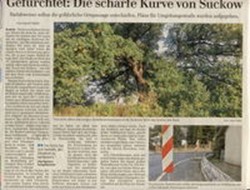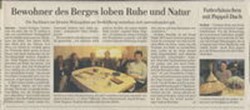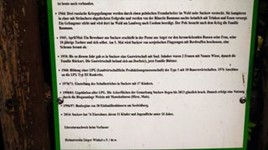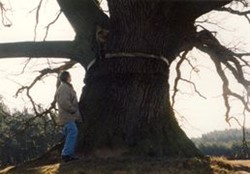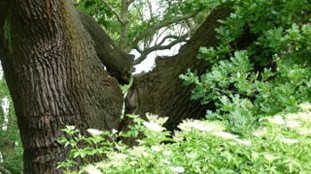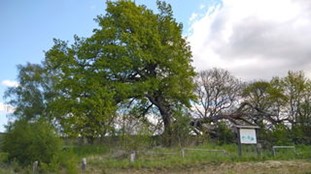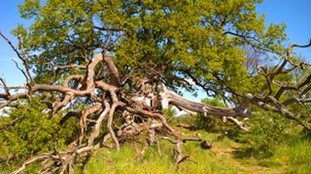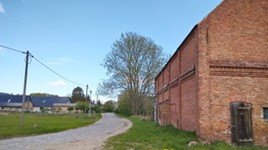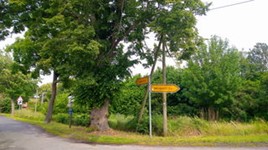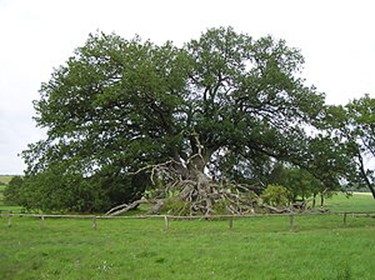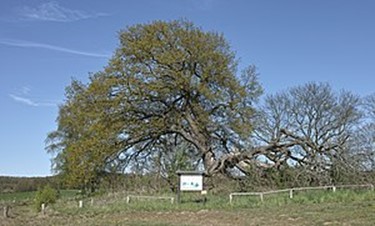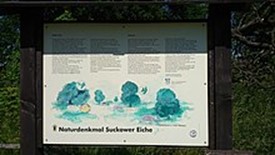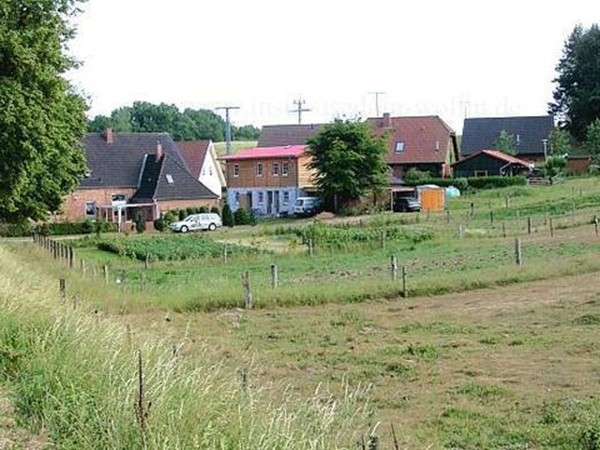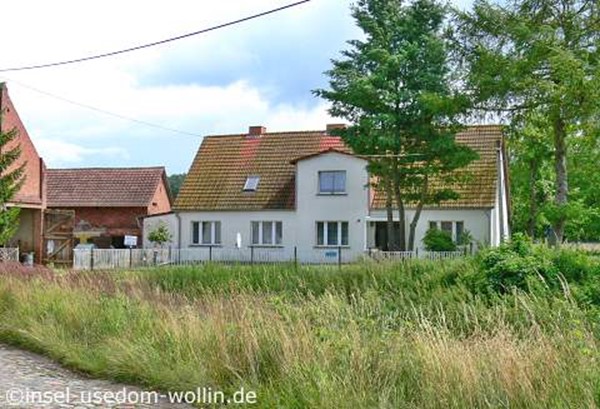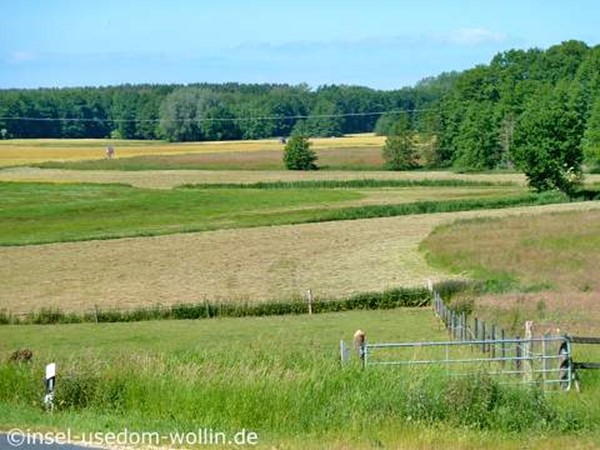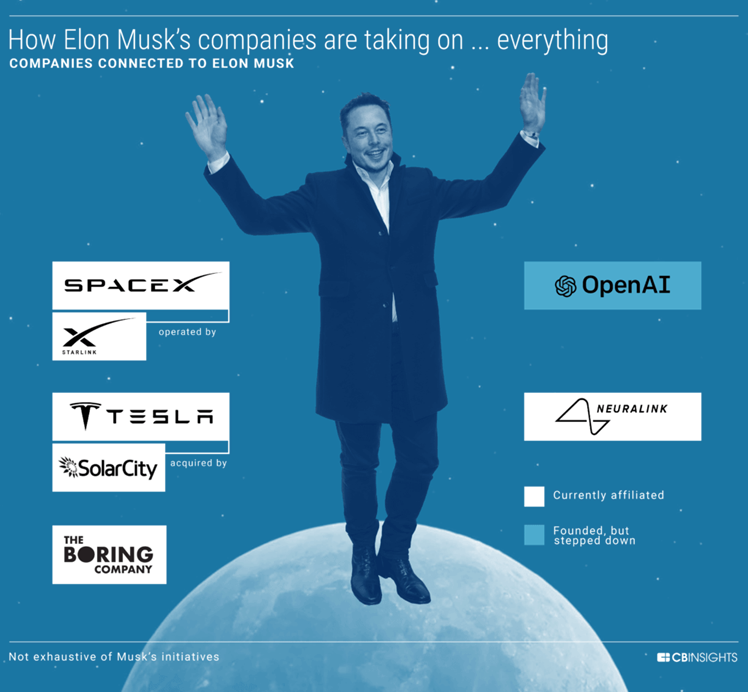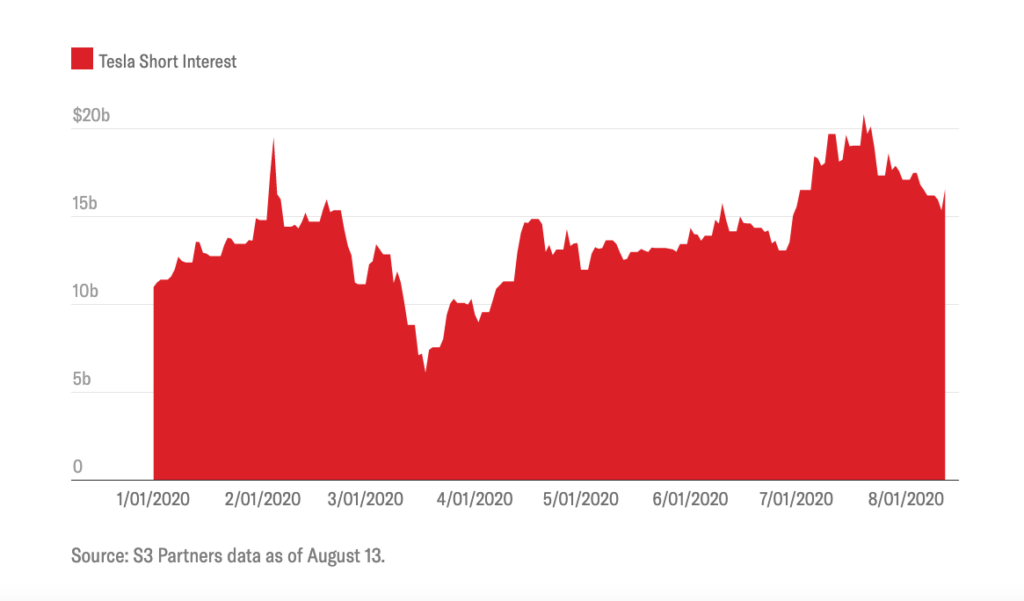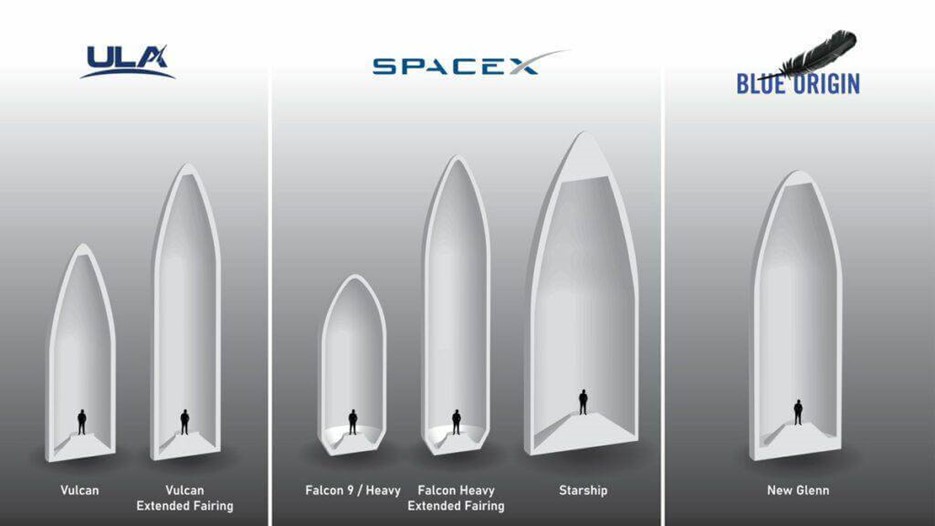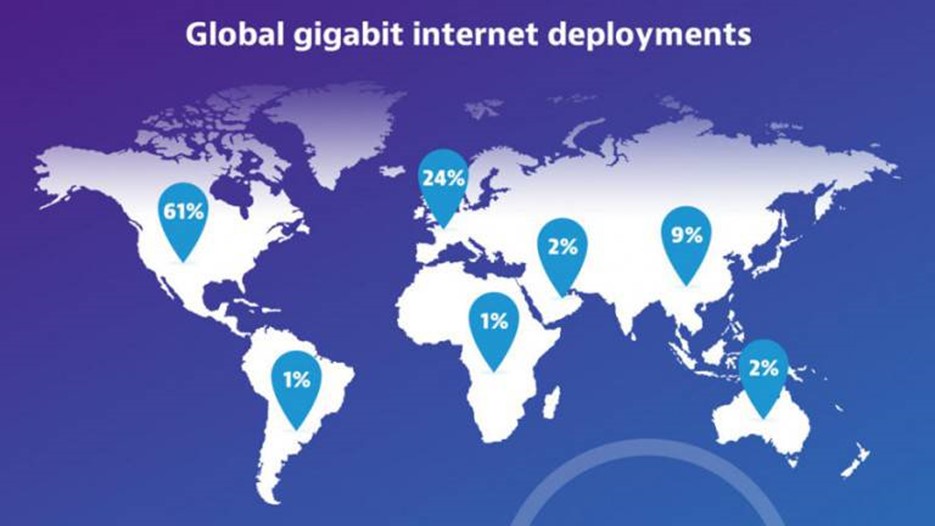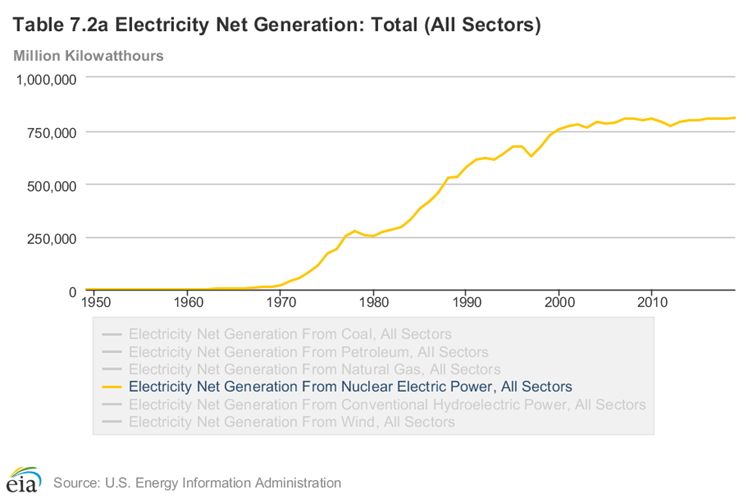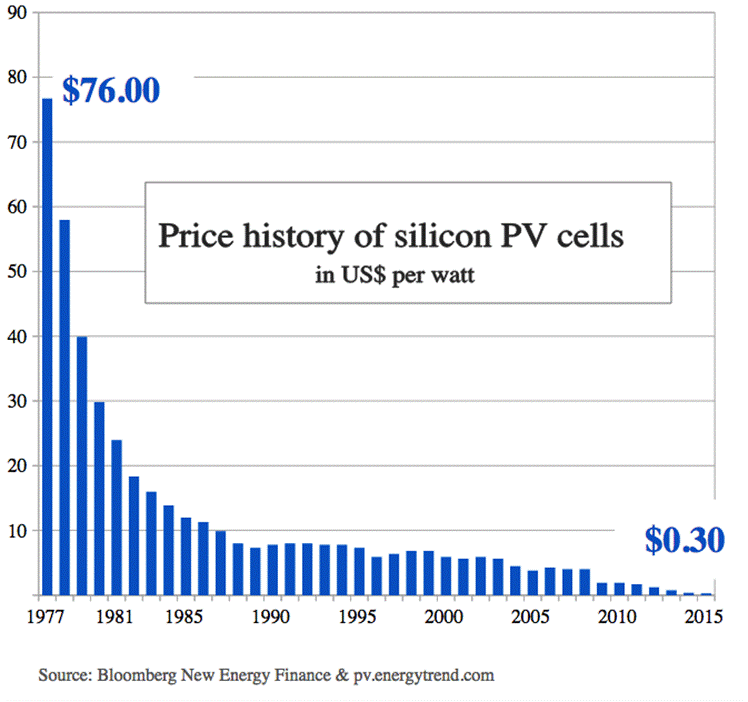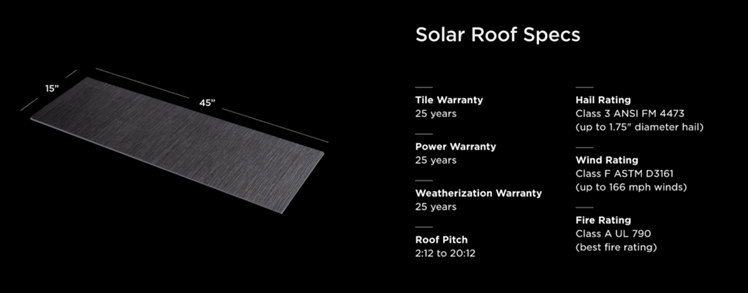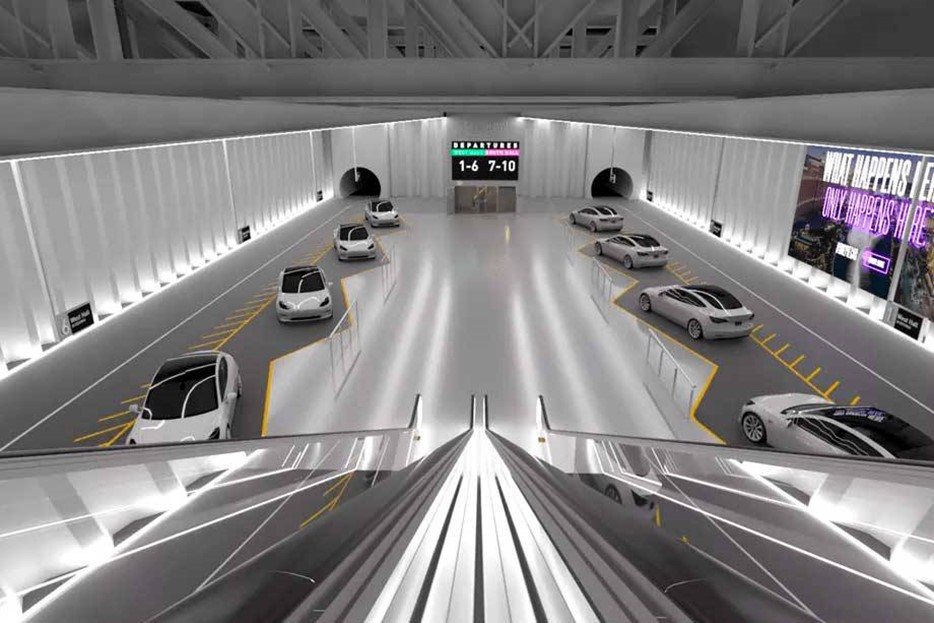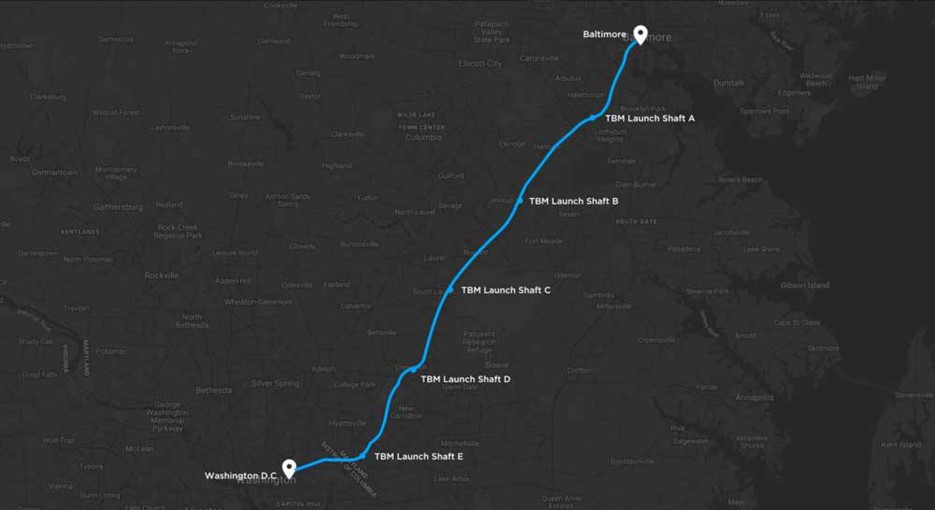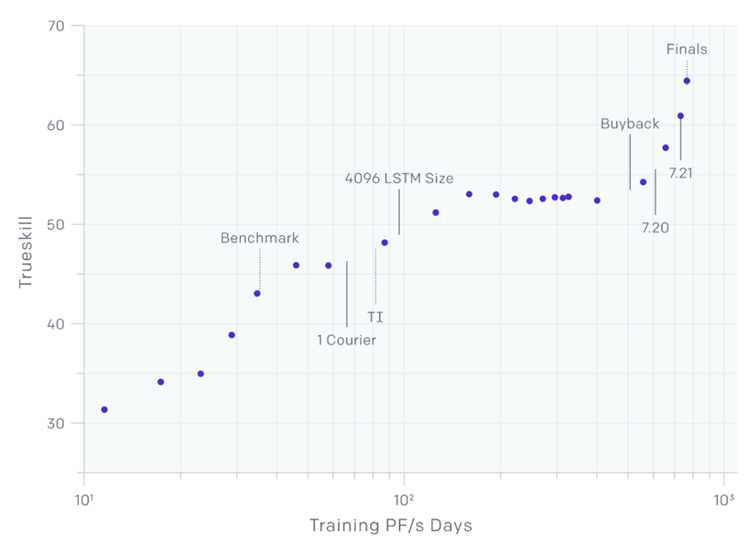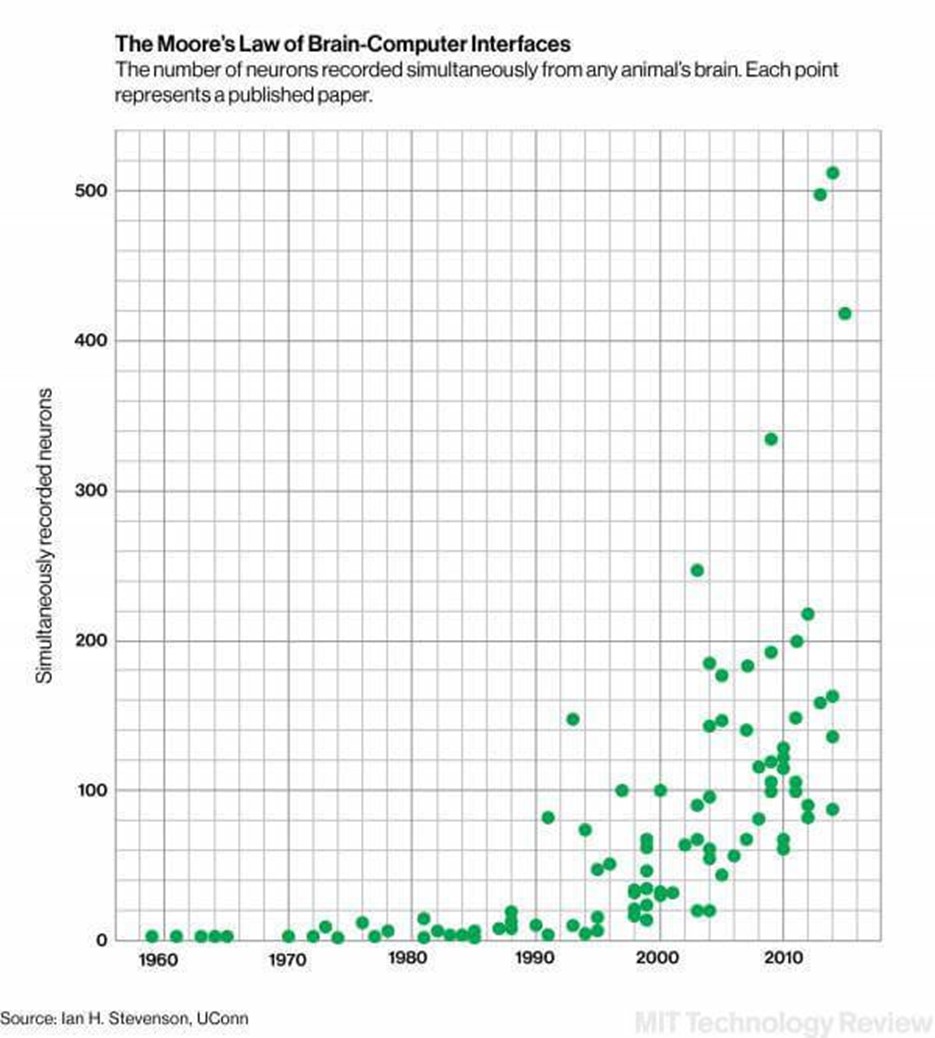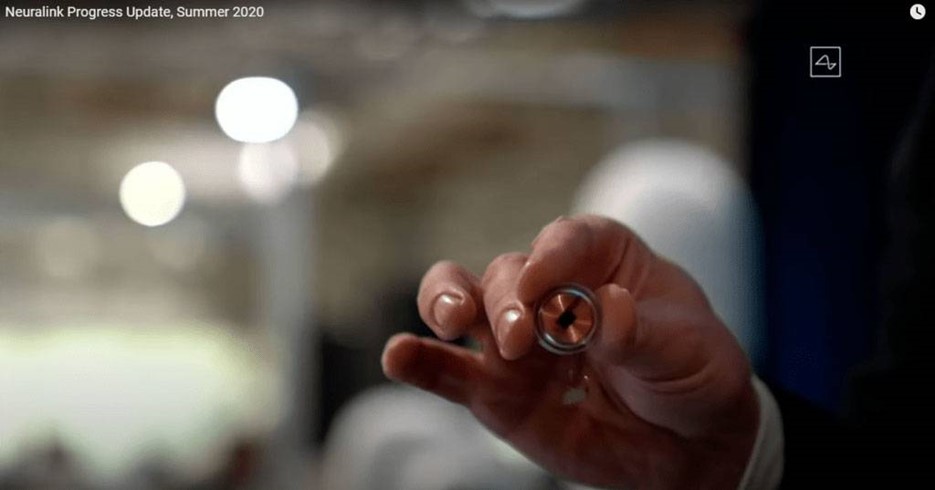Paleolithic to Neolithic Period
History of Germany between 43000 BCE – 2301 BCE
Ice-age Paleolithic

Venus of
Hohle Fels
The ancient humans were present in Germany at least 600,000 years ago. The oldest complete hunting weapons ever found anywhere in the world were discovered in a coal mine in Schoningen, Germany in 1995 where three 380,000 year old wooden javelins unearthed. The Neander valley in Germany was the location where the first ever non-modern human fossil was discovered and recognized in 1856; the new species of human was named Neanderthal man. The Neanderthal 1 fossils are 40,000 years old. At a similar age, evidence of modern humans exists in caves in the Swabian Jura near Ulm. Finds include 42,000 year old bird bone and mammoth ivory flutes which are the oldest musical instruments ever found, the 40,000 year old Ice Age Löwenmensch figurine which is the oldest uncontested figurative art discovered, and the 35,000 year old Venus of Hohle Fels which is the oldest uncontested human figurative art discovered.
Mesolithic Period
The Mesolithic began with the Holocene warm period around 10,000 BCE and ended with the introduction of farming, the date of which varied in each geographical region. Regions that experienced greater environmental effects as the last glacial period ended have a much more apparent Mesolithic era, lasting millennia. In northern Europe, for example, societies were able to live well on rich food supplies from the marshlands created by the warmer climate. Such conditions produced distinctive human behaviors that are preserved in the material record, such as the Maglemosian and Azilian cultures. Most of the Mesolithic findings in Germany are located in the south-western regions like Upper Rhine Valley, Black Forest and Swabian Jura.
Neolithic Period
The term Neolithic or New Stone Age is most frequently used in connection with agriculture, which is the time when cereal cultivation and animal domestication was introduced. Because agriculture developed at different times in different regions of the world, there is no single date for the beginning of the Neolithic. The agriculture first developed in Central Europe about 5,500 BCE.
In Germany one of the most important Neolithic sites is the Goseck circle, dating to approximately the 5th millennium BCE, discovered by aerial photographs from the 1990s and, since 2003, regarded as the oldest observatory in Europe. It consists of a circular Henge-construction with a diameter of 75 m. It marks the beginning of a millennia-old astronomical tradition known also from the Nebra skydisk, discovered in 1999, only 25 km distant therefrom.
References: Ancient.eu, Museo Tridentino di Scienze Naturali
Bronze Age
History of Germany between 2300 BCE – 801 BCE
The German Bronze Age is usually divided into an Early Bronze Age (from the end of the third/beginning of the second millennium BCE to around 1600 BCE), a Middle Bronze Age (1600–c.1300 BCE), and a Late Bronze Age, also called the Urnfield period (1300–c.800 BCE). The most important distinguishing features are the burial customs and grave forms: the Early Bronze Age was characterized by flat graves with bodies buried in the crouched position, the Middle Bronze Age by inhumations beneath mounds, and the Late Bronze Age by the deposition of urns containing cremated remains in burial places known as urn fields.
In Central Europe, the early Bronze Age Unetice culture (1800-1600 BCE) includes numerous smaller groups like the Straubingen, Adlerberg and Hatvan cultures. Some very rich burials, such as the one located at Leubingen (today part of Sömmerda) with grave gifts crafted from gold, point to an increase of social stratification already present in the Unetice culture. Cemeteries of this period are rare and of small size. Following the Unetice culture the middle Bronze Age Tumulus culture was characterized by inhumation burials in tumuli (barrows).
Cremation burials characterized the late Bronze Age Urnfield culture. It includes the Lusatian culture in eastern Germany and Poland (1300-500 BCE) that continued into the Iron Age. The Central European Bronze Age led to the Iron Age Hallstatt culture (700-450 BCE).
References: Wikipedia, Oxford Handbooks Online
Iron Age
History of Germany between 800 BCE – 251 BCE
In Europe, the Iron Age included the last stages of the prehistoric period and the first of the proto-historic periods. The Iron Age in Europe produced an elaboration of designs in weapons, implements, and utensils. These were no longer cast but hammered into shape, and decoration was elaborate curvilinear rather than simple rectilinear; the forms and character of the ornamentation of the northern European weapons resembled in some respects Roman arms, while in other respects they were peculiar and evidently representative of northern art. Iron Age people buried their dead in an extended position, whereas in the preceding late Bronze Age cremated remains in urns had been the rule.
A great cemetery, discovered in 1846, of Hallstatt, near Gmunden, represents the transition from bronze to iron in Central Europe with forms of late Bronze Age implements and weapons imitated in iron for burials. In the Swiss or La Tène group of implements and weapons, forms are new and the transition complete. In Central Europe, the Iron Age generally divided into the early Iron Age Hallstatt culture (800–450 BCE) and the late Iron Age La Tène culture (beginning in 450 BCE).
The Celtic culture, or rather Proto-Celtic groups, had expanded to much of Central Europe (Gauls), and, following the Gallic invasion of the Balkans in 279 BCE, as far east as central Anatolia (Galatians). In Central Europe, the prehistoric Iron Age ends with the Roman conquest.
From the Hallstatt culture, the Iron Age spread westward with Celtic expansion from the 6th century BCE. In Poland, the Iron Age reached the late Lusatian culture about the 6th century, followed in some areas by the Pomeranian culture.
The ethnic ascription of many Iron Age cultures is bitterly contested, as the roots of Germanic, Baltic and Slavic peoples converged in this area.
Germanic Tribes
History of Germany between 250 BCE – 486 CE
The Germanic tribes originated in Scandinavia, from which they moved south around 1000 BCE. By 100 BCE they had reached the Rhine area, and about two hundred years later, the Danube Basin, both Roman borders. The western German tribes consisted of the Marcomanni, Alamanni, Franks, Angles, and Saxons, while the Eastern tribes north of the Danube consisted of the Vandals, Gepids, Ostrogoths, and Visigoths. The Alans, Burgundians, and Lombards are less easy to define.
In approximately 222 BCE, the first use of the Latin term “Germani” appears in the Roman inscription which may simply be referring to Gaul or related people. Caesar first observed the Germanic tribes in 51 BCE, and marked them as a possible threat. German tribes were clan-based, with blood-loyalty the basis for all bonds. Living intermittently in settled forest clearings called hamlets, they engaged in mixed subsistence cultivation of crops and animals. Cultivation was rudimentary given the hard clay soil and use of implements more suited to Mediterranean areas. There were no food surpluses, so population remained small, around one million. Without occupational specialization, they were an iron-age culture that emphasized warfare.
The Roman historian Tacitus described the Germans again about 100 CE. After The Roman Caesar had conquered Gaul up to the Rhine, expansion space was curtailed for the nomadic tribes, causing demographic pressure on the borders. Some Germans began to come into contact with Roman civilization at border garrisons. They greatly admired the material aspects of Roman culture, such as arms, domestic wares, etc. Roman legions accepted small numbers for auxiliary service, and small scale German-Roman trade relations emerged involving cattle and slaves.
Germans on the move
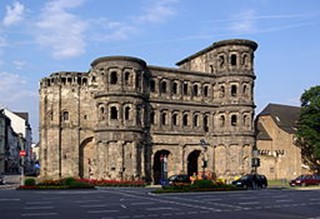
Porta Nigra in Trier, best preserved
Roman building north of the Alps.
Gradually, changes occurred in the tribes over the first centuries CE: Though kinship remained the primary bond, a new kind of political formation evolved as the Comitatus. Older, successful warrior chieftains took in younger aspirants, who then raided and shared the booty with each other. This arrangement produced a professional, more lethal warrior group, where bonds were now between man and lord, the latter signaling the beginning of a small aristocracy. At the same time inter-tribal conflict increased, spurred in part by the desire to partake of Roman material culture. Tribes began electing fewer, longer serving war-chiefs. Eastern German tribes, Goths and Vandals, also gradually migrated from North Poland to the Ukraine, pressuring the Danube frontier; they also settled north of the Black Sea, to the West of the Huns.
Around 200, small tribes began to coalesce into supra-tribal groups. Southern Germans came together into the Alamanni, while middle Rhine groups incorporated into the Franks, and the North Germans coalesced as Saxons. By the 300s, there was a continual belt of barbarian tribes all along the Roman lines from the North Sea to the Black Sea.
Increasing numbers of Germans began to serve as Roman auxiliary forces just beyond the Roman borders, learning new tactics, acquiring better materials, coming to admire Roman society even more. Some even underwent a process of partial Romanization. A son of a captured slave, Ulfillias, gradually converted some, the Visigoths in particular, to Christianity from the 340s. While the Roman church soon branded Arian forms of Christianity as heresy, Visigoths slowly communicated it to the Ostrogoths, Vandals, and Burgundians.
By the early 4th century, the reign of Constantine achieved an element of stability to the benefit both of the Romans and of their more primitive neighbors. This was about to be upset, from about 370 CE, by devastating Hun incursions from the east.
The arrival of the Huns

The Huns, whose name has come to rival the Vandals as an emotive term for destructive violence, arrive in history with an impact as sudden as it is mysterious. They appear from the steppes north of the Black Sea in the late 4th century. About 370 the Huns defeated the Ostrogoths. Six years later they descended upon the Visigoths, driving them south over the Danube. For a while, Huns bode their time in the territories of the Ostrogoths and Visigoths. But they had already set in motion a chain reaction now called the Migration Period. The period of human migration, roughly between 300 and 700 CE, in Europe marked the transition from Late Antiquity to the Early Middle Ages. These movements were catalyzed by profound changes within both the Roman Empire and the so-called ‘barbarian frontier’. Migrating peoples during this period included the Huns, Goths, Vandals, Bulgars, Alans, Suebi, Frisians, and Franks, among other Germanic and Slavic tribes.
The first phase, between 300 and 500 CE, put Germanic peoples in control of most areas of the former Western Roman Empire. The first to formally enter Roman territory — as refugees from the Huns — were the Visigoths in 376. Tolerated by the Romans on condition that they defend the Danube frontier, they rebelled, eventually invading Italy and sacking Rome itself in 410 CE, before settling in Iberia and founding a kingdom there that endured 300 years. They were followed into Roman territory by the Ostrogoths led by Theodoric the Great, who settled in Italy itself. In Gaul, the Franks, a fusion of western Germanic tribes whose leaders had strongly aligned with Rome, entered Roman lands more gradually and peacefully during the 5th century, and generally found acceptance as rulers of the Roman-Gaulish population. Fending off challenges from the Allemanni, Burgundians and Visigoths, the Frankish kingdom became the nucleus of the future states of France and Germany. Meanwhile, Roman Britain was more slowly invaded and settled by Angles and Saxons.
References: Wikipedia, ancient.eu, historyworld.net
Part of the Frankish Empire
History of Germany between 487 – 843 CE
Merovingian kingdom (481-751)
Numerous small Frankish kingdoms existed during the 5th century around Cologne, Tournai, Le Mans, Cambrai and elsewhere. After the fall of the Western Roman Empire, the Franks created an empire under the Merovingian kings and subjugated the other Germanic tribes. The Merovingian kings of the Germanic Franks conquered northern Gaul in 486 CE. Swabia became a duchy under the Frankish Empire in 496, following the Battle of Tolbiac; in 530 Saxons and Franks destroyed the Kingdom of Thuringia. In the 5th and 6th centuries the Merovingian kings conquered several other Germanic tribes and kingdoms. King Chlothar I (558–561) ruled the greater part of what is now Germany and made expeditions into Saxony, while the Southeast of modern Germany was still under influence of the Ostrogoths. Saxons inhabited the area down to the Unstrut River.
Regions of the Frankish Empire came under the control of autonomous dukes of mixed Frankish and native blood. Frankish Colonists were encouraged to move to the newly conquered territories. While the local Germanic tribes were allowed to preserve their laws, they were pressured into becoming Christians.
The German territories became part of Austrasia (meaning “eastern land”), the northeastern portion of the Kingdom of the Merovingian Franks. As a whole, Austrasia comprised parts of present-day France, Germany, Belgium, Luxembourg and the Netherlands. After the death of the Frankish king Clovis I in 511, his four sons partitioned his kingdom including Austrasia. Authority over Austrasia passed back and forth from autonomy to kingly subjugation, as Frankish lands were alternately united and subdivided by the Merovingian kings.
In 718, Charles Martel, the Franconian Mayor of the Palace, made war against Saxony because of its help for the Neustrians. His son Carloman started a new war against Saxony in 743, because the Saxons gave aid to Duke Odilo of Bavaria.
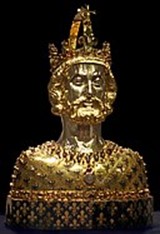
Mask reliquary of
Charles the Great
in Aachen Cathedral
In 751, Pippin III, Mayor of the Palace under the Merovingian king, himself assumed the title of king and was anointed by the Church. Now the Frankish kings were set up as protectors of the pope, and Charles the Great launched a decades-long military campaign against their heathen rivals, the Saxons and the Avars. The campaigns and insurrections of the Saxon Wars lasted from 772 to 804. The Saxons and Avars were eventually overwhelmed: the people were forcibly converted to Christianity, their lands annexed by the Carolingian Empire.
Carolingian empire (751 – 843 CE)
After the death of Frankish king Pepin the Short in 768 CE, his son Charles consolidated his control over his kingdom and became known as “Charles the Great” or “Charlemagne.” From 771 until his death in 814, Charlemagne extended the Carolingian empire into northern Italy and the territories of all west Germanic peoples, including the Saxons and the Baiuvarii (Bavarians). In 800, Charlemagne’s authority was confirmed by his coronation as Holy Roman Emperor by the pope on Christmas Day in Rome. Imperial strongholds (Kaiserpfalzen) became economic and cultural centers, of which Aachen was the most famous.
Fighting among Charlemagne’s grandchildren caused the Carolingian empire to partition into several parts under the Treaty of Verdun (843), the Treaty of Meerssen (870), and the Treaty of Ribemont. The German region then developed out of the East Frankish kingdom, East Francia.
References: Wikipedia
East Francia
History of Germany between 844 – 918 CE
In medieval historiography, East Francia or the Kingdom of the East Franks forms the earliest stage of the Kingdom of Germany, lasting from about 840 until about 962. East Francia formed by division of the Carolingian Empire after the death of Emperor Louis the Pious.
In August 843, after three years of civil war following the death of Louis the Pious, his three sons and heirs signed the Treaty of Verdun. His namesake, Louis the German, received the eastern portion of mostly Germanic-speaking lands. The kingdom of West Francia went to Louis’s younger half-brother Charles the Bald and between their realms a kingdom of Middle Francia, incorporating Italy, was given their elder brother, the Emperor Lothair I. While West and Middle Francia contained the traditional Frankish ‘heartlands’, the East consisted mostly of lands only annexed to the Frankish empire in the eighth century. These included the duchies of Alemannia, Bavaria, Saxony and Thuringia, as well as the northern and eastern marches with the Danes and Slavs.
The external threat from marauding Vikings in the west and from Magyars in the east aggravated an already grave internal problem for the feudal dynasties of Charlemagne’s descendants. Feudalism, with its decentralization of military and territorial power, has at the best of times a tendency to foster regional independence. In periods of crisis, when regions required arms to repel invaders, it was almost inevitable that the feudal holders of large tracts of frontier territory grew in strength until capable of challenging their own king. Baronial contenders upset the succession to the throne in the west Frankish kingdom from the late 9th century and in the eastern kingdom a few years later.
In 911 the east Frankish king Louis the Child died without a male heir. The only legitimate claimant within the Carolingian dynasty was Charles III, ruler of the west Frankish kingdom. Rather than do homage to him, and reunite the empire of Charlemagne, the eastern Franks and the Saxons elected one of their own number to the vacant throne. Conrad, the duke of Franconia, became the German king. Although not of the Carolingian line, Conrad was nevertheless a Frank. Upon his death the Franks and the Saxons together elected a Saxon king. In 919 Henry I becomes the founder of a Saxon, Ottonian, dynasty.
References: Wikipedia
Ottonian Dynasty
History of Germany between 919 – 1024 CE
Ottonian dynasty
The Ottonian dynasty was a Saxon dynasty of German monarchs (919–1024 CE), named after its first Emperor Otto I, but also known as the Saxon dynasty after the family’s origin in the German stem duchy of Saxony. The Ottonian rulers were successors of the Carolingian dynasty in East Francia.
The east Frankish kingdom over which Henry I (Henry the Fowler) became king in 919 consisted of four great duchies – territories settled by tribes (such as the Baivarii and the Suebi) conquered by the Franks and converted to Christianity. Their leaders, becoming dukes in the Frankish feudal system, accepted the rule of any strong Frankish king but tended toward independence during other reigns. These four are Bavaria, Swabia, Saxony and the Franks’ own region, Franconia. Lorraine, a fifth duchy, was a frequently disputed territory between the east and west Frankish kingdoms. Henry succeeded in asserting at least nominal control over the five duchies (often called the stem duchies). His son Otto succeeded him in 936 CE.
Otto the Great

Grave of Otto I in Magdeburg
Otto I, Duke of Saxony upon the death of his father in 936, had himself elected king within a few weeks. He continued the work of unifying all of the German tribes into a single kingdom, greatly expanding the powers of the king at the expense of the aristocracy. Through strategic marriages and personal appointments, he installed members of his own family to the kingdom’s most important duchies. This, however, did not prevent his relatives from entering into civil war: both Otto’s brother Duke Henry of Bavaria and his son Duke Liudolf of Swabia revolted against his rule. Otto was able to suppress their uprisings. In consequence, the various dukes, who had previously been co-equals with the king, found themselves reduced to royal subjects under the king’s authority. His decisive victory over the Magyars at the Battle of Lechfeld in 955 ended the Hungarian invasions of Europe and secured his hold over his kingdom.
The defeat of the pagan Magyars earned King Otto the reputation as the savior of Christendom and the epithet “the Great”. He transformed the Church in Germany into a kind of proprietary church and a major royal power base to which he donated charity. His family was responsible for this German Church’s creation. By 961, Otto had conquered the Kingdom of Italy, a troublesome inheritance that none wanted, and extended his kingdom’s borders to the north, east, and south. In control of much of central and southern Europe, the patronage of Otto and his immediate successors triggered a limited cultural renaissance of the arts and architecture. He confirmed the 754 Donation of Pepin and, with recourse to the concept of translatio imperii in succession of Charlemagne, proceeded to Rome to have himself crowned Holy Roman Emperor by Pope John XII in 962. He even reached a settlement with the Byzantine emperor John I Tzimiskes by marrying his son and heir Otto II to John’s niece Theophanu. In 968 he established the Archbishopric of Magdeburg at his long-time residence.
Descendants
Co-ruler with his father since 961 and crowned emperor in 967, Otto II ascended the throne at the age of 18. By excluding the Bavarian line of Ottonians from the line of succession, he strengthened Imperial authority and secured his own son’s succession to the Imperial throne. During his reign, Otto II attempted to annex the whole of Italy into the Empire, bringing him into conflict with the Byzantine emperor and with the Saracens of the Fatimid Caliphate. His campaign against the Saracens ended in 982 with a disastrous defeat at the Battle of Stilo. Moreover in 983 Otto II experienced a Great Slav Rising against his rule.
Otto II died in 983 at the age of 28 after a ten-year reign. Succeeded by his three-year-old son Otto III as king, his sudden death plunged the Ottonian dynasty into crisis. During her regency for Otto III, the Byzantine princess Theophanu abandoned her late husband’s imperialistic policy and devoted herself entirely to furthering her own agenda in Italy.
When Otto III came of age, he concentrated on securing the rule in the Italian domains, installing his confidants Bruno of Carinthia and Gerbert of Aurillac as Popes. In 1000 he made a pilgrimage to the Congress of Gniezno in Poland, establishing the Archdiocese of Gniezno and confirming the royal status of the Piast ruler Bolesław I the Brave. Expelled from Rome in 1001, Otto III died at age 21 the next year, without an opportunity to reconquer the city.
The childless Otto III was succeeded by Henry II, a son of Duke Henry II of Bavaria. He was crowned king in 1002. Henry II spent the first years of his rule consolidating his political power on the borders of the German kingdom. He waged several campaigns against Bolesław I of Poland and then moved successfully to Italy where he was crowned emperor by Pope Benedict VIII on 14 February 1014. He reinforced his rule by endowing and founding numeorus dioceses, such as the Bishopric of Bamberg in 1007, intertwining the secular and ecclesiastical authority over the Empire. Pope Eugene III canonized Henry II in 1146 CE.
As his marriage with Cunigunde of Luxembourg remained childless, the Ottonian dynasty became extinct with the death of Henry II in 1024. The crown passed to Conrad II of the Salian dynasty, great-grandson of Liutgarde, a daughter of Otto I, and the Salian duke Conrad the Red of Lorraine. When King Rudolph III of Burgundy died without heirs on 2 February 1032, Conrad II successfully claimed also this kingship on the basis of an inheritance Emperor Henry II had extorted from the former in 1006, having invaded Burgundy to enforce his claim after Rudolph attempted to renounce it in 1016.
Ottonian Renaissance

Senkschmelz Cross in
Essen Cathedral
The Ottonian Renaissance was a limited “renaissance” of Byzantine and Late Antique art that accompanied the reigns of the first three the Ottonian emperors. The Ottonian Renaissance is recognized especially in the arts and architecture, invigorated by renewed contact with Constantinople, in some revived cathedral schools, such as that of Archbishop Bruno of Cologne, in the production of illuminated manuscripts from a handful of elite scriptoria, such as Quedlinburg Abbey, founded by Otto in 936, and in political ideology. The Imperial court became the center of religious and spiritual life, led by the example of women of the royal family.
A small group of Ottonian monasteries received direct sponsorship from the Emperor and bishops and produced some magnificent medieval illuminated manuscripts, the premier art form of the time. Corvey produced some of the first manuscripts, followed by the scriptorium at Hildesheim after 1000. The most famous Ottonian scriptorium was at the island monastery of Reichenau on Lake Constance: hardly any other works have formed the image of Ottonian art as much as the miniatures which originated there. One of the greatest Reichenau works was the Codex Egberti, containing narrative miniatures of the life of Christ, the earliest such cycle, in a fusion of styles including Carolingian traditions as well as traces of insular and Byzantine influences. Other well known manuscripts included the Reichenau Evangeliary, the Liuther Codex, the Pericopes of Henry II, the Bamberg Apocalypse and the Hitda Codex.
References: Wikipedia, historyworld.net
Salian Dynasty
History of Germany between 1025 – 1124 CE
The Salian dynasty was an age of four German Kings (1024–1125), Conrad II, Henry III, Henry IV, and Henry V. All of these kings were also crowned Holy Roman Emperor (1027–1125): the term Salic dynasty also applies to the Holy Roman Empire of the time as a separate term.
After the death of the last Saxon of the Ottonian Dynasty in 1024, Conrad II was first the elected German King and then three years later elected Holy Roman Emperor. Conrad II was the only son of Count Henry of Speyer and Adelheid of Alsace (both territories in the Franconia of that day). His election as German King happened in 1024 CE. Early in 1026 Conrad II went to Milan, where Ariberto, archbishop of Milan, crowned him king of Italy. When Rudolph III, King of Burgundy died in 1032, Conrad II also claimed this kingship based on inheritance Henry II had extorted from the former in 1006. Finally, he was crowned emperor of the Holy Roman Empire on 26 March 1027 CE.
The four Salian kings of the dynasty ruled the Holy Roman Empire from 1027 to 1125, and firmly established their monarchy as a major European power. They achieved the development of a permanent administrative system based on a class of public officials answerable to the crown.
Already in 1028, Conrad II had his son Henry III elected and anointed king of Germany. Henry’s tenure led to overstatement of sacral kingship. During this reign, Speyer Cathedral expanded to become the largest church in Western Christendom. Henry’s conception of a legitimate power of royal disposition in the duchies was successful against the dukes, and thus secured royal control. However in Lorraine, this led to years of conflict, from which Henry emerged as the winner. But also in southern Germany a powerful opposition group formed in the years 1052-1055. In 1046, Henry ended the papal schism, freed the Papacy from dependence on Roman nobility, and laid the basis for its universal applicability. His early death in 1056 was long regarded a disaster for the Empire.
Struggle with Pope
The early Salians owed much of their success to their alliance with the Church, a policy begun by Otto I, which gave them the material support they needed to subdue rebellious dukes. In time, however, the Church came to regret this close relationship. The alliance broke down in 1075 during what came to be known as the Investiture Controversy (or Investiture Dispute), a struggle in which the reformist Pope, Gregory VII, demanded that Emperor Henry IV renounce his rights over the Church in Germany. The pope also attacked the concept of monarchy by divine right and gained the support of significant elements of the German nobility interested in limiting imperial absolutism. More important, the pope forbade ecclesiastical officials under pain of excommunication to support Henry as they had so freely done in the past. In the end, Henry IV journeyed to Canossa in northern Italy in 1077 to do penance and to receive absolution from the pope. However, he resumed the practice of lay investiture (appointment of religious officials by civil authorities) and arranged the election of an antipope (Antipope Clement III) in 1080.

Speyer Cathedral, burial place
of all Salian Emperors
The monarch’s struggle with the papacy resulted in a war that ravaged the Holy Roman Empire from 1077 until the Concordat of Worms in 1122. The reign of the last ruler of the Salian dynasty Henry V coincided with the final phase of the great Investiture Controversy, which had pitted pope against emperor. By the settlement of the Concordat of Worms, Henry V surrendered to the demands of the second generation of Gregorian reformers. This agreement stipulated that the pope would appoint high-church officials but gave the German king the right to veto the papal choices. Imperial control of Italy was lost for a time, and the imperial crown became dependent on the political support of competing aristocratic factions. Feudalism also became more widespread as freemen sought protection by swearing allegiance to a lord. These powerful local rulers, having thereby acquired extensive territories and large military retinues, took over administration within their territories and organized it around an increasing number of castles. The most powerful of these local rulers came to be called princes rather than dukes.
According to the laws of the feudal system of the Holy Roman Empire, the king had no claims on the vassals of the other princes, only on those living within his family’s territory. Lacking the support of the formerly dependent vassals and weakened by the increasing hostility of the Church, the monarchy lost its pre-eminence. Thus the Investiture Contest strengthened local power in the Holy Roman Empire – in contrast to the trend in France and England, where centralized royal power grew. The Investiture Contest had an additional effect. The long struggle between emperor and pope hurt the Holy Roman Empire’s intellectual life, in this period largely confined to monasteries, and the empire no longer led or even kept pace with developments occurring in France and Italy. For instance, no universities were founded in the Holy Roman Empire until the fourteenth century.
End of the Dynasty
The first Hohenstaufen king Conrad III was a grandson of the Salian Henry IV, Holy Roman Emperor. Agnes, Henry IV’s daughter and Henry V’s sister, was the heiress of Salian dynasty’s lands: her first marriage produced the royal and imperial Hohenstaufen dynasty and her second marriage the ducal Babenberg potentates of Duchy of Austria which was elevated primarily due to such connections, Privilegium Minus.
References: Wikipedia
Hohenstaufen Dynasty
History of Germany between 1125 – 1254 CE
The Hohenstaufen, also called the Staufer or Staufen, were a dynasty of German kings (1138–1254) during the Middle Ages. Besides Germany, they also ruled the Kingdom of Sicily (1194–1268). Three members of the dynasty—Frederick I, Henry VI and Frederick II—were crowned Holy Roman Emperor.

Hohenstaufen
Castle ruins
The family derives its name from the castle which the first Swabian duke of the lineage built there in the latter half of the 11th century. The name “Hohenstaufen”, meaning “high Staufen”, designated a dynasty of the 14th century. Staufen castle was only called Hohenstaufen by historians in the 19th century, to distinguish it from other castles of the same name. The name of the dynasty followed suit, but in recent decades, the trend in German historiography has been to prefer the name Staufer.
The noble family first appeared in the late 10th century in the Swabian Riesgau region around the former Carolingian court of Nördlingen. A local count Frederick (d. about 1075) is mentioned as progenitor in a pedigree drawn up by Abbot Wibald of Stavelot at the behest of Emperor Frederick Barbarossa in 1153. Upon Frederick’s death, he was succeeded by his son, Duke Frederick II, in 1105. Frederick II remained a close ally of the Salians, he and his younger brother Conrad were named the king’s representatives in Germany when the king was in Italy. Around 1120, Frederick II married Judith of Bavaria from the rival House of Welf.
Ruling in Germany
When the last male member of the Salian dynasty, Emperor Henry V, died without heirs in 1125, a controversy arose about the succession. Duke Frederick II and Conrad, the two current male Staufers, by their mother Agnes were grandsons of late Emperor Henry IV and nephews of Henry V. Frederick attempted to succeed to the throne of the Holy Roman Emperor (formally known as the King of the Romans) through a customary election, but lost to the Saxon duke Lothair of Supplinburg. A civil war between Frederick’s dynasty and Lothair’s ended with Frederick’s submission in 1134. After Lothair’s death in 1137, Frederick’s brother Conrad was elected King as Conrad III.
Conrad’s brother Duke Frederick II died in 1147, and was succeeded in Swabia by his son, Duke Frederick III. When King Conrad III died without adult heir in 1152, Frederick also succeeded him, taking both German royal and imperial titles.
Frederick Barbarossa

Frederick Barbarossa
Frederick I, known as Frederick Barbarossa because of his red beard, struggled throughout his reign to restore the power and prestige of the German monarchy against the dukes, whose power had grown both before and after the Investiture Controversy under his Salian predecessors. As royal access to the resources of the church in Germany was much reduced, Frederick was forced to go to Italy to find the finances needed to restore the king’s power in Germany. He was soon crowned emperor in Italy, but decades of warfare on the peninsula yielded scant results. The Papacy and the prosperous city-states of the Lombard League in northern Italy were traditional enemies, but the fear of Imperial domination caused them to join ranks to fight Frederick. Under the skilled leadership of Pope Alexander III, the alliance suffered many defeats but ultimately was able to deny the emperor a complete victory in Italy. Frederick returned to Germany. He had vanquished one notable opponent, his Welf cousin, Duke Henry the Lion of Saxony and Bavaria in 1180, but his hopes of restoring the power and prestige of the monarchy seemed unlikely to be met by the end of his life.
During Frederick’s long stays in Italy, the German princes became stronger and began a successful colonization of Slavic lands. Offers of reduced taxes and manorial duties enticed many Germans to settle in the east in the course of the Ostsiedlung. In 1163 Frederick waged a successful campaign against the Kingdom of Poland in order to re-install the Silesian dukes of the Piast dynasty. With the German colonization, the Empire increased in size and came to include the Duchy of Pomerania as well as Bohemia and the March of Moravia. A quickening economic life in Germany increased the number of towns and Imperial cities, and gave them greater importance. It was also during this period that castles and courts replaced monasteries as centers of culture. Growing out of this courtly culture, Middle High German literature reached its peak in lyrical love poetry, the Minnesang, and in narrative epic poems such as Tristan, Parzival, and the Nibelungenlied.
Henry VI
Frederick died in 1190 while on the Third Crusade and was succeeded by his son, Henry VI. Elected king even before his father’s death, Henry went to Rome to be crowned emperor. He married Queen Constance of Sicily, and a death in his wife’s family in 1194 gave him possession of the Kingdom of Sicily, a source of vast wealth. Henry failed to make royal and Imperial succession hereditary, but in 1196 he succeeded in gaining a pledge that his infant son Frederick would receive the German crown. Faced with difficulties in Italy and confident that he would realize his wishes in Germany at a later date, Henry returned to the south, where it appeared he might unify the peninsula under the Hohenstaufen name. After a series of military victories, however, he fell ill and died of natural causes in Sicily in 1197. His underage son Frederick could only succeed him in Sicily and Malta, while in the Empire the struggle between the House of Staufen and the House of Welf erupted once again.
Philip of Swabia
Because the election of a three-year-old boy to be German king appeared likely to make orderly rule difficult, the boy’s uncle, Duke Philip of Swabia, brother of late Henry VI, was designated to serve in his place. Other factions however favoured a Welf candidate. In 1198, two rival kings were chosen: the Hohenstaufen Philip of Swabia and the son of the deprived Duke Henry the Lion, the Welf Otto IV. A long civil war began; Philip was about to win when he was murdered by the Bavarian count palatine Otto VIII of Wittelsbach in 1208. Pope Innocent III initially had supported the Welfs, but when Otto, now sole elected monarch, moved to appropriate Sicily, Innocent changed sides and accepted young Frederick II and his ally, King Philip II of France, who defeated Otto at the 1214 Battle of Bouvines. Frederick had returned to Germany in 1212 from Sicily, where he had grown up, and was elected king in 1215. When Otto died in 1218, Fredrick became the undisputed ruler, and in 1220 was crowned Holy Roman Emperor.
Frederick II
Emperor Frederick II spent little time in Germany as his main concerns lay in Southern Italy. He founded the University of Naples in 1224 to train future state officials and reigned over Germany primarily through the allocation of royal prerogatives, leaving the sovereign authority and imperial estates to the ecclesiastical and secular princes. He made significant concessions to the German nobles, such as those put forth in an imperial statute of 1232, which made princes virtually independent rulers within their territories. These measures favored the further fragmentation of the Empire.
By the 1226 Golden Bull of Rimini, Frederick had assigned the military order of the Teutonic Knights to complete the conquest and conversion of the Prussian lands. A reconciliation with the Welfs took place in 1235, whereby Otto the Child, grandson of the late Saxon duke Henry the Lion, was named Duke of Brunswick and Lüneburg. The power struggle with the popes continued and resulted in Fredrick’s excommunication in 1227. In 1239, Pope Gregory IX excommunicated Fredrick again, and in 1245 he was condemned as a heretic by a church council. Although Frederick was one of the most energetic, imaginative, and capable rulers of the time, he was not concerned with drawing the disparate forces in Germany together. His legacy was thus that local rulers had more authority after his reign than before it. The clergy also had become more powerful.
By the time of Frederick’s death in 1250, little centralized power remained in Germany. The Great Interregnum, a period in which there were several elected rival kings, none of whom was able to achieve any position of authority, followed the death of Frederick’s son King Conrad IV of Germany in 1254. The German princes vied for individual advantage and managed to strip many powers away from the diminished monarchy. Rather than establish sovereign states however, many nobles tended to look after their families. Their many male heirs created more and smaller estates, and from a largely free class of officials previously formed, many of these assumed or acquired hereditary rights to administrative and legal offices. These trends compounded political fragmentation within Germany. The period ended in 1273 with the election of Rudolph of Habsburg, a godson of Frederick.
End of the Staufer dynasty
Conrad IV was succeeded as duke of Swabia by his only son, two-year-old Conradin. By this time, the office of duke of Swabia had been fully subsumed into the office of the king, and without royal authority had become meaningless. In 1261, attempts to elect young Conradin king were unsuccessful. He also had to defend Sicily against an invasion by Charles of Anjou, a brother of the French king. Charles had defeated Conradin’s uncle Manfred, King of Sicily in the Battle of Benevento on 26 February 1266. The king himself, refusing to flee, rushed into the midst of his enemies and was killed. Conradin’s campaign to retake control ended with his defeat in 1268 at the Battle of Tagliacozzo after which he was handed over to Charles, who had him publicly executed at Naples. With Conradin, the direct line of the Dukes of Swabia finally ceased to exist, though most of the later emperors were descended from the Staufer dynasty indirectly.
During the political decentralization of the late Staufer period, the population had grown from an estimated 8 million in 1200 to about 14 million in 1300, and the number of towns increased tenfold. The most heavily urbanized areas of Germany were located in the south and the west. Towns often developed a degree of independence, but many were subordinate to local rulers if not immediate to the emperor. Colonization of the east also continued in the thirteenth century, most notably through the efforts of the Teutonic Knights. German merchants also began trading extensively on the Baltic.
References: Wikipedia
Habsburg Dynasty
History of Germany between 1255 – 1516 CE
For almost twenty years after the death of Conrad IV in 1254, the German princes fail to elect any effective king or emperor. This period is usually known (with a grandiloquence to match the Great Schism in the papacy) as the Great Interregnum. It ended with the election of Rudolf I as German king in 1273. The choice subsequently seems of great significance, because he was the first Habsburg on the German throne. During the next century, the electors choose kings from several families.
Charles IV was crowned emperor in Rome in 1355. He made his capital in Prague (he has inherited Bohemia as well as Luxembourg), bringing the city its first period of glory. The imperial dignity remained in Charles’s family until 1438, when it transferred again to the Habsburgs. The real ascendancy of the Habsburgs began when Frederick V, the king of Germany from 1440, was crowned Holy Roman emperor as Frederick III in 1452. The Habsburgs married their way to the power. They began with Austria and then married the princesses from Netherlands, Burgundy, the duchy of Milan, Sicily and finally Spain merging countries under their power including all dominions on the American continent. The highpoint of Habsburg power came under Charles V (1500-58) who ruled over an empire over which the sun never set.
In 1356 Charles IV issues the “Golden Bull” which clarified the new identity which the Holy Roman empire had gradually adopted. It ended papal involvement in the election of a German king, by the simple means of denying Rome’s right to approve or reject the electors’ choice. The Golden Bull also clarified and formalized the process of election of a German king. The choice was traditionally been in the hands of seven electors, but their identity has varied. In return, by a separate agreement with the pope, Charles abandoned imperial claims in Italy – apart from a title to the kingdom of Lombardy, inherited from Charlemagne.
Imperial Cities

St. Mary’s Church, Lübeck
The fragmented political structure of Germany had certain advantages for the larger German towns. An elected emperor often found it difficult to control virtually independent territories, held by hereditary nobles or by dignitaries of the church. In such circumstances there may had a natural alliance between the emperor and the citizens of a prosperous borough – who frequently had their own grudge against their local feudal overlord. The rich burghers were able to help the emperor with funds or troops for his armies and he was able help burghers with privileges to protect their trade. Gradually, over the centuries, a premier league of German cities began to emerge. Such cities ran their own affairs and make alliances among themselves for mutual benefit, even put armies into the field to enforce their interests. Each of them was ran by a Rat, or council, membership of which is often limited to the leading local families. Imperial cities were inclined to group together in large trading alliances – of which the Hanseatic League is the best known example. A document of 1422 lists 75 free German cities. They included many of the most distinguished places in early German history – Aachen, Cologne, Lübeck, Hamburg, Bremen, Dortmund, Frankfurt am Main, Regensburg, Augsburg, Nuremberg, Ulm. From 1489 all the free cities were formally represented in the imperial diet.
The Hanseatic League was a commercial and defensive confederation of merchant guilds and their market towns (like Lübeck, Rostock and Wismar). It dominated Baltic maritime trade (c. 1400-1800) along the coast of Northern Europe. It stretched from the Baltic to the North Sea and inland during the Late Middle Ages and early modern period.
Population and Economy
Around 1350 Germany and almost the whole of Europe were ravaged by the Black Death. Jews suffered persecution on religious and economic grounds; many fled to Poland. The Black Death killed an estimated 30–60 percent of Europe’s population in the 14th century. After the plague and other disasters of the 14th century, the early-modern European society gradually came into being as a result of economic, religious, and political changes. A money economy arose which provoked social discontent among knights and peasants. Gradually, a proto-capitalistic system evolved out of feudalism. The Fugger family gained prominence through commercial and financial activities and became financiers to both ecclesiastical and secular rulers. The knightly classes found their monopoly on arms and military skill undermined by the introduction of mercenary armies and foot soldiers. Predatory activity by “robber knights” became common.
During his reign from 1493 to 1519, Maximilian I tried to reform the Empire. An Imperial supreme court was established, imperial taxes were levied, and the power of the Imperial Diet was increased. The reforms, however, were frustrated by the continued territorial fragmentation of the Empire.
References: Wikipedia, Historyworld.net, Hyperhistory.com
Reformation and Wars of Religion
History of Germany between 1517 – 1617 CE
Reformation
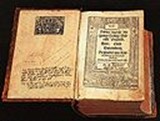
Martin Luther’s Bible
translated into German (1534).
In the early 16th century there was much discontent in Germany occasioned by abuses such as indulgences in the Catholic Church, and a general desire for reform. In 1517 the Reformation began with the publication of Martin Luther’s 95 Theses; he posted them in the town square and gave copies of them to German nobles, but it is debated whether he nailed them to the church door in Wittenberg as is commonly said. The list detailed 95 assertions Luther believed to show corruption and misguidance within the Catholic Church. One often cited example, though perhaps not Luther’s chief concern, is a condemnation of the selling of indulgences; another prominent point within the 95 Theses is Luther’s disagreement both with the way in which the higher clergy, especially the pope, used and abused power, and with the very idea of the pope.
In 1521 Luther was outlawed at the Diet of Worms. But the Reformation spread rapidly, helped by the Emperor Charles V’s wars with France and the Turks. Hiding in the Wartburg Castle, Luther translated the Bible from Latin to German, establishing the basis of the German language. A curious fact is that Luther spoke a dialect which had minor importance in the German language of that time. After the publication of his Bible, his dialect suppressed the others and evolved into what is now the modern German.
German Peasants’ War
In 1524 the German Peasants’ War broke out in Swabia, Franconia and Thuringia against ruling princes and lords, following the preaching of Reformers. But the revolts, which were assisted by war-experienced noblemen like Götz von Berlichingen and Florian Geyer (in Franconia), and by the theologian Thomas Münzer (in Thuringia), were soon repressed by the territorial princes. As many as 100,000 German peasants were massacred during the revolt. With the protestation of the Lutheran princes at the Imperial Diet of Speyer (1529) and rejection of the Lutheran “Augsburg Confession” at Augsburg (1530), a separate Lutheran church emerged.
From 1545 the Counter-Reformation began in Germany. The main force was provided by the Jesuit order, founded by the Spaniard Ignatius of Loyola. Central and northeastern Germany were by this time almost wholly Protestant, whereas western and southern Germany remained predominantly Catholic. In 1547, Holy Roman Emperor Charles V defeated the Schmalkaldic League, an alliance of Protestant rulers. The Peace of Augsburg in 1555 brought recognition of the Lutheran faith. But the treaty also stipulated that the religion of a state was to be that of its ruler.
The Augsburg formula preserves for half a century an uneasy peace in the German lands, while princes use their religious freedom as a form of diplomacy. In 1608/1609 the Protestant Union and the Catholic League were formed. Early in the 17th century the two sides form up in opposing blocs, each headed by a branch of the Wittelsbach family. The Wittelsbachs of the Rhine Palatinate, in southwest Germany, are Calvinist; they lead the Protestant Union, formed in 1608. The Wittelsbachs of Bavaria, just to the east, form the Catholic League in the following year.
This confrontation does not immediately lead to armed conflict – until the Protestants of distant Bohemia elect as their king, in 1619, the Calvinist Wittelsbach, Frederick V. The response by the Catholic League, in alliance with pope and emperor, becomes one of the opening encounters of the Thirty Years’ War.
References: Wikipedia, Historyworld.net
Thirty Years War & Rise of Prussia
History of Germany between 1618 – 1739
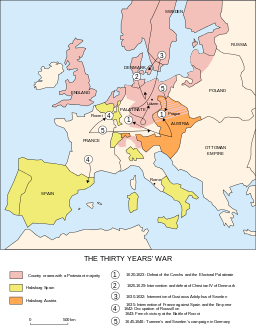
Map of the Thirty Years’ War
From 1618 to 1648 the Thirty Years’ War ravaged the Holy Roman Empire. The causes were the conflicts between Catholics and Protestants, the efforts by the various states within the Empire to increase their power and the Catholic Emperor’s attempt to achieve the religious and political unity of the Empire. The immediate occasion for the war was the uprising of the Protestant nobility of Bohemia against the emperor, but the conflict widened into a European War with the intervention of King Christian IV of Denmark (1625–29), Gustavus Adolphus of Sweden (1630–48) and France under Cardinal Richelieu. Germany became the main theatre of war and the scene of the final conflict between France and the Habsburgs for predominance in Europe.
The fighting often was out of control, with marauding bands of hundreds or thousands of starving soldiers spreading plague, plunder, and murder. The armies that were under control moved back and forth across the countryside year after year, levying heavy taxes on cities, and seizing the animals and food stocks of the peasants without payment. The enormous social disruption over three decades caused a dramatic decline in population because of killings, disease, crop failures, declining birth rates and random destruction, and the out-migration of terrified people. One estimate shows a 38% drop from 16 million people in 1618 to 10 million by 1650, while another shows “only” a 20% drop from 20 million to 16 million. The Altmark and Württemberg regions were especially hard hit. It took generations for Germany to fully recover.
The war ended in 1648 with the Peace of Westphalia. Alsace was permanently lost to France, Pomerania was temporarily lost to Sweden, and the Netherlands officially left the Empire. Imperial power declined further as the states’ rights increased.
Rise of Brandenburg-Prussia
From 1640, Brandenburg-Prussia had started to rise under the Great Elector, Frederick William. The Peace of Westphalia in 1648 strengthened it even further, through the acquisition of East Pomerania. The second half of the 17th century laid the basis for Prussia to become one of the great players in European politics later on. The emerging Brandenburg-Prussian military potential, based on the introduction of a standing army in 1653, was symbolized by the widely noted victories in Warsaw (1656) and Fehrbellin (1675) and by the Great Sleigh Drive (1678). Brandenburg-Prussia also established a navy and German colonies in the Brandenburger Gold Coast and Arguin. Frederick William, known as “The Great Elector”, opened Brandenburg-Prussia to large-scale immigration of mostly Protestant refugees from all across Europe, most notably Huguenot immigration following the Edict of Potsdam. Frederick William also started to centralize Brandenburg-Prussia’s administration and reduce the influence of the estates.
In 1701, Frederick III, Elector of Brandenburg, succeeded in elevating his status to King in Prussia. This was made possible by the Duchy of Prussia’s sovereign status outside the Holy Roman Empire of the German Nation, and approval by the Habsburg emperor and other European royals in the course of forming alliances for the War of the Spanish succession and the Great Northern War. From 1701 onward, the Hohenzollern domains were referred to as the Kingdom of Prussia, or simply Prussia. Legally, the personal union between Brandenburg and Prussia continued until the dissolution of the Holy Roman Empire in 1806. However, by this time the emperor’s overlordship over the empire had become a legal fiction. Hence, after 1701, Brandenburg was de facto treated as part of the Prussian kingdom. Frederick and his successors continued to centralize and expand the state, transforming the personal union of politically diverse principalities typical for the Brandenburg-Prussian era into a system of provinces subordinate to Berlin.
From 1713 to 1740, King Frederick William I, also known as the “Soldier King”, established a highly centralized, militarized state with a heavily rural population of about three million (compared to the nine million in Austria).
References: Wikipedia
Emerging States
History of Germany between 1740 – 1788
The dominant factor in 18th-century German history was undoubtedly the emergence of Prussia as the main rival to Austria, which had long been the leading state within the German empire. Prussia grew in stature for several reasons – through Frederick the Great’s seizure of the rich province of Silesia, through the personal prestige acquired by Frederick himself, and through the vast gain of territory in the successive partitions of Poland. But certain other states were also be identified at this time as likely players in the struggles which will eventually lead, in the 19th century, to a united Germany.
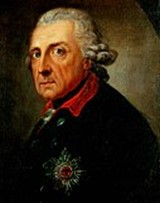
Frederick II the Great,
reigned 1740-1786
Saxony began the 18th century as a very significant power. The state was weakened in subsequent decades, through disastrous involvement in Poland and because it was between the archrivals Prussia and Austria. Even so, Saxony’s size and large population gave it an undeniable importance.
Hanover acquired an entirely new stature during the century, from the personal link with Britain after the elector succeeds to the British throne in 1714 as George I. In the wars of the 18th century, Hanover had a special importance and exposure, as Britain’s continental outpost.
Bavaria, ruled by the Wittelsbachs, had played a major role in German history from early medieval times. In recent centuries a division between two branches of the family had somewhat reduced its status. From 1329, the western region went its own way as the Palatinate of the Rhine. The split was accentuated in the Reformation, when the Palatinate became Protestant while Bavaria remained Roman Catholic.
The Palatinate returned to the Catholic fold in 1685, and by the end of the 18th century, this line has recovered the entire inheritance. In 1777, the Bavarian line of the dynasty died out. The region reunited under the rule of the Palatine branch.
Wars
In the War of Austrian Succession (1740–1748) Maria Theresa fought successfully for recognition of her succession to the throne. But in the Silesian Wars and in the Seven Years’ War she had to cede 95 percent of Silesia to Frederick the Great of Prussia. After the Peace of Hubertsburg in 1763 between Austria, Prussia and Saxony, Prussia won recognition as a great power, thus launching a century-long rivalry with Austria for the leadership of the German peoples.
In 1772–1795 Prussia took the lead in the partitions of Poland, with Austria and Russia splitting the rest. Prussia occupied the western territories of the former Polish–Lithuanian Commonwealth that surrounded existing Prussian holdings. This occupation led over a century of Polish resistance until Poland again became independent in 1918.
Culture and Enlightenment
Before 1750 the German upper classes looked to France for intellectual, cultural and architectural leadership; French was the language of high society. By the mid-18th century the Enlightenment had transformed German high culture in music, philosophy, science and literature. Christian Wolff (1679–1754) was the pioneer as a writer who expounded the Enlightenment to German readers; he legitimized German as a philosophic language. German music, sponsored by the upper classes, came of age under composers Johann Sebastian Bach (1685–1750), Joseph Haydn (1732–1809), and Wolfgang Amadeus Mozart (1756–1791).
Remote Königsberg philosopher Immanuel Kant (1724–1804) tried to reconcile rationalism and religious belief, individual freedom, and political authority. Kant’s work contained basic tensions that would continue to shape German thought – and indeed all of European philosophy – well into the 20th century.
The German Enlightenment won the support of princes, aristocrats, and the middle classes, and it permanently reshaped the culture.
From 1763, against resistance from the nobility and citizenry, an “enlightened absolutism” established in Prussia and Austria, according to which the ruler governed according to the best precepts of the philosophers. The economies developed and legal reforms followed, including the abolition of torture and improvement in the status of Jews. Emancipation of the peasants slowly began. Compulsory education was instituted.
References: Wikipedia, Historyworld.net
German Mediatization & French Revolution (1789-1814)
History of Germany between 1789 – 1814
French Revolution and Napoleonic Wars
German reaction to the French Revolution in 1789 was mixed at first. German intellectuals celebrated the outbreak, hoping to see the triumph of Reason and The Enlightenment. The royal courts in Vienna and Berlin denounced the overthrow of the king and the threatened spread of notions of liberty, equality, and fraternity. By 1793, the execution of the French king and the onset of the Terror disillusioned the educated middle class. Reformers said the solution was to have faith in the ability of Germans to reform their laws and institutions in peaceful fashion.
Europe experienced two decades of war revolving around France’s efforts to spread its revolutionary ideals, and the opposition of reactionary royalty. War broke out in 1792 as Austria and Prussia invaded France, but were defeated at the Battle of Valmy (1792). The German lands saw armies marching back and forth, bringing devastation, but also bringing new ideas of liberty and civil rights for the people. Prussia and Austria ended their failed wars with France but (with Russia) partitioned Poland among themselves in 1793 and 1795. The French took control of the Rhineland, imposed French-style reforms, abolished feudalism, established constitutions, promoted freedom of religion, emancipated Jews, opened the bureaucracy to ordinary citizens of talent, and forced the nobility to share power with the rising middle class. Napoleon created the Kingdom of Westphalia (1807–1813) as a model state. These reforms proved largely permanent and modernized the western parts of Germany. When the French tried to impose the French language, German opposition grew in intensity. A Second Coalition of Britain, Russia, and Austria then attacked France but failed. Napoleon established direct or indirect control over most of western Europe, including the German states apart from Prussia and Austria. The old Holy Roman Empire was little more than a farce; Napoleon simply abolished it in 1806 while forming new countries under his control. In Germany Napoleon set up the “Confederation of the Rhine,” comprising most of the German states except Prussia and Austria.
Prussia tried to remain neutral while imposing tight controls on dissent, but with German nationalism sharply on the rise, the small nation blundered by going to war with Napoleon in 1806. Its economy was weak, its leadership poor, and the once mighty Prussian army was a hollow shell. Napoleon easily crushed it at the Battle of Jena (1806). Napoleon occupied Berlin, and Prussia paid dearly. Prussia lost its recently acquired territories in western Germany, its army was reduced to 42,000 men, no trade with Britain was allowed, and Berlin had to pay Paris heavy reparations and fund the French army of occupation. Saxony changed sides to support Napoleon and join his Confederation of the Rhine; its elector was rewarded with the title of king and given a slice of Poland taken from Prussia.
After Napoleon’s fiasco in Russia in 1812, including the deaths of many Germans in his invasion army, Prussia joined with Russia. Major battles followed in quick order, and when Austria switched sides to oppose Napoleon his situation grew tenuous. He was defeated in a great Battle of Leipzig in late 1813, and Napoleon’s empire started to collapse. One after another the German states switched to oppose Napoleon, but he rejected peace terms. Allied armies invaded France in early 1814, Paris fell, and in April Napoleon surrendered. He returned for 100 days in 1815, but was finally defeated by the British and German armies at Waterloo. Prussia was the big winner at the Vienna peace conference, gaining extensive territory.
German mediatization
German mediatization was the major territorial restructuring that took place between 1802 and 1814 in Germany and the surrounding region by means of the mass mediatization and secularization of a large number of Imperial Estates: ecclesiastical principalities, free imperial cities, secular principalities and other minor self-ruling entities that lost their independent status and were absorbed into the remaining states.
The mass mediatization and secularization of German states that took place at the time was not initiated by Germans. It came under relentless military and diplomatic pressure from revolutionary France and Napoleon. It constituted the most extensive redistribution of property and territories in German history prior to 1945.
The two highpoints of the process were the secularization/annexation of ecclesiastical territories and free imperial cities in 1802–03, and the mediatization of secular principalities and counties in 1806.
Reference: Wikipedia
German Confederation
History of Germany between 1815 – 1866
The German Confederation was a loose association of 39 German states in Central Europe, created by the Congress of Vienna in 1815 to coordinate the economies of separate German-speaking countries and to replace the former Holy Roman Empire. Most historians have judged the Confederation to be weak and ineffective, as well as an obstacle to German nationalist aspirations. It collapsed due to the rivalry between Prussia and Austria, warfare, the 1848 revolution, and the inability of the multiple members to compromise. It dissolved after the Prussian victory in the Seven Weeks’ War of 1866.
In 1848, revolutions by liberals and nationalists failed in their attempts to establish a unified German state. Talks between the German states failed in 1848, and the Confederation briefly dissolved but was re-established in 1850.
The dispute between the two dominant member states of the Confederation, Austria and Prussia, over which had the inherent right to rule German lands ended in favor of Prussia after the Seven Weeks’ War of 1866. This led to the creation of the North German Confederation under Prussian leadership in 1867. A number of South German states remained independent, allied first with Austria (until 1867) and subsequently with Prussia (until 1871), after which they became a part of the new German Empire.

Austrian chancellor
Klemens von Metternich
Industrialization
Before 1850 Germany lagged far behind the leaders in industrial development – Britain, France, and Belgium. In 1800, Germany’s social structure was poorly suited to entrepreneurship or economic development. Domination by France during the era of the French Revolution (1790s to 1815), however, produced important institutional reforms. Reforms included the abolition of feudal restrictions on the sale of large landed estates, the reduction of the power of the guilds in the cities, and the introduction of a new, more efficient commercial law. Nevertheless, traditionalism remained strong in most of Germany. Until mid-century, the guilds, the landed aristocracy, the churches, and the government bureaucracies had so many rules and restrictions that entrepreneurship was held in low esteem, and given little opportunity to develop. From the 1830s and 1840s, Prussia, Saxony, and other states reorganized agriculture. The introduction of sugar beets, turnips, and potatoes yielded a higher level of food production, which enabled a surplus rural population to move to industrial areas. The beginnings of the industrial revolution in Germany came in the textile industry, and was facilitated by eliminating tariff barriers through the Zollverein, starting in 1834.
Science and culture
German artists and intellectuals, heavily influenced by the French Revolution and by the great German poet and writer Johann Wolfgang von Goethe (1749–1832), turned to Romanticism after a period of Enlightenment. Philosophical thought was decisively shaped by Immanuel Kant (1724–1804). Ludwig van Beethoven (1770–1827) was the leading composer of Romantic music. His use of tonal architecture in such a way as to allow significant expansion of musical forms and structures was immediately recognized as bringing a new dimension to music. His later piano music and string quartets, especially, showed the way to a completely unexplored musical universe, and influenced Franz Schubert (1797–1828) and Robert Schumann (1810–1856). In opera, a new Romantic atmosphere combining supernatural terror and melodramatic plot in a folkloric context was first successfully achieved by Carl Maria von Weber (1786–1826) and perfected by Richard Wagner (1813–1883) in his Ring Cycle. The Brothers Grimm (1785–1863 & 1786–1859) not only collected folk stories into the popular Grimm’s Fairy Tales, but were also linguists, now counted among the founding fathers of German studies. The Brothers Grimm won the commission to begin the The German Dictionary, which remains the most comprehensive work on the German language.
Reference: Wikipedia
German Empire
History of Germany between 1867 – 1918
The German Empire was the historical German nation state that existed from the unification of Germany in 1871 to the abdication of Kaiser Wilhelm II in November 1918, when Germany became a federal republic.
After 1850, the states of Germany rapidly industrialized, with particular strengths in coal, iron (and later steel), chemicals, and railways. In 1871, it had a population of 41 million people, and by 1913, this had increased to 68 million. A heavily rural collection of states in 1815, the united Germany became predominantly urban. During its 47 years of existence, the German Empire operated as an industrial, technological, and scientific giant, gaining more Nobel Prizes in science than any other country.
Germany became a great power, boasting a rapidly growing rail network, the world’s strongest army, and a fast-growing industrial base. In less than a decade, its navy became second only to Britain’s Royal Navy.
On 10 December 1870, the North German Confederation Reichstag gave the title of German Emperor to William I, the King of Prussia. He was succeeded by Frederick III (for only 99 days before his death in 1888) and Wilhelm II (1888-1918).

Imperial Germany 1871–1918
Franco-Prussian War
The Franco-Prussian War (1870-1871) was a conflict between the Second French Empire and the German states of the North German Confederation led by the Kingdom of Prussia. The conflict was caused by Prussian ambitions to extend German unification. Some historians argue that the Prussian chancellor Otto von Bismarck planned to provoke a French attack in order to draw the southern German states into an alliance with the North German Confederation dominated by Prussia.
A series of swift Prussian and German victories in eastern France, culminating in the Siege of Metz and the Battle of Sedan, saw the army of the Second Empire decisively defeated. Following the Siege of Paris, the capital fell on 28 January 1871 and then a revolutionary uprising called the Paris Commune seized power in the capital and held it for two months, until it was bloodily suppressed by the regular French army at the end of May 1871.
The German states proclaimed their union as the German Empire under the Prussian king, Wilhelm I, uniting Germany as a nation-state. The Treaty of Frankfurt of 10 May 1871 gave Germany most of Alsace and some parts of Lorraine, which became the Imperial territory of Alsace-Lorraine. The German conquest of France and the unification of Germany upset the European balance of power, that had existed since the Congress of Vienna in 1815 and Otto von Bismarck maintained great authority in international affairs for two decades. French determination to regain Alsace-Lorraine and fear of another Franco-German war, along with British apprehension about the balance of power, became factors in the causes of World War I.
World War I
When the great crisis of 1914 arrived, the German Empire had only one ally – Austria-Hungary. They were later joined by the Ottoman Empire and Bulgaria to form the Central Powers or Quadruple Alliance.
In the First World War, German plans to capture Paris quickly in autumn 1914 failed, and the war on the Western Front became a stalemate. The Allied naval blockade caused severe shortages of food. Germany was repeatedly forced to send troops to bolster Austria and Turkey on other fronts. However, Germany had great success on the Eastern Front; it occupied large Eastern territories following the Treaty of Brest-Litovsk. German declaration of unrestricted submarine warfare in early 1917 was designed to strangle the British; it failed, because of the use of a trans-Atlantic convoy system. But the declaration brought the United States into the war. Meanwhile, German civilians and soldiers had become war-weary and radicalized by the Russian Revolution.
The high command under Paul von Hindenburg and Erich Ludendorff increasingly controlled the country, as they gambled on one last offensive in spring 1918 before the Americans could arrive in force, using large numbers of troops and artillery withdrawn from the Eastern Front. This failed, and by October the armies were in retreat, the Austro-Hungarian Empire and the Ottoman Empire had collapsed, and the German people had lost faith in their political system. The Empire collapsed in the November 1918 Revolution as the Emperor and all the ruling monarchs abdicated, and a republic took over.
Reference: Wikipedia
Weimar Republic
History of Germany between 1919 – 1932

German losses after Word War I
The humiliating peace terms in the Treaty of Versailles provoked bitter indignation throughout Germany, and seriously weakened the new democratic regime. The greatest enemies of democracy had already been constituted. In December 1918, the Communist Party of Germany (KPD) was founded, and in 1919, it tried and failed to overthrow the new republic. Adolf Hitler in 1919 took control of the new National Socialist German Workers’ Party (NSDAP), which failed in a coup in Munich in 1923. Both parties, as well as parties supporting the republic, built militant auxiliaries that engaged in increasingly violent street battles. Electoral support for both parties increased after 1929 as the Great Depression hit the economy hard, producing many unemployed men who became available for the paramilitary units.
The early years

A disabled war veteran reduced to
begging, Berlin, 1923.
On 11 August 1919 the Weimar constitution came into effect, with Friedrich Ebert as first President. In the first months of 1920, the Reichswehr was to be reduced to 100,000 men, in accordance with the Treaty of Versailles. This included the dissolution of many Freikorps – units made up of volunteers. In an attempt at a coup d’état in March 1920, the Kapp Putsch, extreme right-wing politician Wolfgang Kapp let Freikorps soldiers march on Berlin and proclaimed himself Chancellor of the Reich. After four days the coup d’état collapsed, due to popular opposition and lack of support by the civil servants and the officers. Other cities were shaken by strikes and rebellions, which were bloodily suppressed.
Germany was the first state to establish diplomatic relations with the new Soviet Union. Under the Treaty of Rapallo, Germany accorded the Soviet Union de jure recognition, and the two signatories mutually cancelled all pre-war debts and renounced war claims.
When Germany defaulted on its reparation payments, French and Belgian troops occupied the heavily industrialised Ruhr district (January 1923). The German government encouraged the population of the Ruhr to passive resistance: shops would not sell goods to the foreign soldiers, coal-mines would not dig for the foreign troops, trams in which members of the occupation army had taken seat would be left abandoned in the middle of the street. The passive resistance proved effective, insofar as the occupation became a loss-making deal for the French government. But the Ruhr fight also led to hyperinflation, and many who lost all their fortune would become bitter enemies of the Weimar Republic, and voters of the anti-democratic right. See 1920s German inflation.
In September 1923, the deteriorating economic conditions led Chancellor Gustav Stresemann to call an end to the passive resistance in the Ruhr. In November, his government introduced a new currency, Reichsmark, together with other measures to stop the hyperinflation. In the following six years the economic situation improved. In 1928, Germany’s industrial production even regained the pre-war levels of 1913.
Great depression
The Wall Street Crash of 1929 marked the beginning of the worldwide Great Depression, which hit Germany as hard as any nation. In July 1931, the Darmstätter und Nationalbank – one of the biggest German banks – failed. In early 1932, the number of unemployed had soared to more than 6,000,000.
On top of the collapsing economy came a political crisis: the political parties represented in the Reichstag were unable to build a governing majority in the face of escalating extremism from the far right (the Nazis, NSDAP) and the far left (the Communists, KPD). In March 1930, President Hindenburg appointed Heinrich Brüning Chancellor. To push through his package of austerity measures against a majority of Social Democrats, Communists and the NSDAP (Nazis), Brüning made use of emergency decrees and dissolved Parliament. In March and April 1932, Hindenburg was re-elected in the German presidential election of 1932.
The Nazi Party was the largest party in the national elections of 1932. On 30 January 1933, pressured by former Chancellor Franz von Papen and other conservatives, President Hindenburg appointed Hitler as Chancellor.
Science and culture
The Weimar years saw a flowering of German science and high culture, before the Nazi regime resulted in a decline in the scientific and cultural life in Germany and forced many renowned scientists and writers to flee. German recipients dominated the Nobel prizes in science. Germany dominated the world of physics before 1933, led by Hermann von Helmholtz, Joseph von Fraunhofer, Daniel Gabriel Fahrenheit, Wilhelm Conrad Röntgen, Albert Einstein, Max Planck and Werner Heisenberg. Chemistry likewise was dominated by German professors and researchers at the great chemical companies such as BASF and Bayer and persons like Fritz Haber. Theoretical mathematicians included Carl Friedrich Gauss in the 19th century and David Hilbert in the 20th century. Carl Benz, the inventor of the automobile, was one of the pivotal figures of engineering.
Among the most important German writers were Thomas Mann (1875–1955), Hermann Hesse (1877–1962) and Bertolt Brecht (1898–1956). The pessimistic historian Oswald Spengler wrote The Decline of the West (1918–23) on the inevitable decay of Western Civilization, and influenced intellectuals in Germany such as Martin Heidegger, Max Scheler, and the Frankfurt School, as well as intellectuals around the world.
After 1933, Nazi proponents of “Aryan physics,” led by the Nobel Prize-winners Johannes Stark and Philipp Lenard, attacked Einstein’s theory of relativity as a degenerate example of Jewish materialism in the realm of science. Many scientists and humanists emigrated; Einstein moved permanently to the U.S. but some of the others returned after 1945.
Reference: Wikipedia
Nazi Germany
History of Germany between 1933 – 1945
In order to secure a majority for his Nazi Party in the Reichstag, Hitler called for new elections in 1933. On the evening of 27 February 1933, a fire was set in the Reichstag building. Hitler swiftly blamed an alleged Communist uprising, and convinced President Hindenburg to sign the Reichstag Fire Decree. This decree, which would remain in force until 1945, repealed important political and human rights of the Weimar constitution. Eleven thousand Communists and Socialists were arrested and brought into hastily prepared Nazi concentration camps and 9,000 were found guilty and most executed.
From 1933, the Nazi regime restored economic prosperity and ended mass unemployment using heavy spending on the military, while suppressing labor unions and strikes. The return of prosperity gave the Nazi Party enormous popularity, with only minor, isolated and subsequently unsuccessful cases of resistance among the German population over the 12 years of rule. The Gestapo (secret police) under Heinrich Himmler destroyed the political opposition and persecuted the Jews, trying to force them into exile, while taking their property. The Party took control of the courts, local government, and all civic organizations except the Protestant and Catholic churches. All expressions of public opinion were controlled by Hitler’s propaganda minister, Joseph Goebbels, who made effective use of film, mass rallies, and Hitler’s hypnotic speaking.
However, many leaders of the Nazi SA (Sturmabteilung) were disappointed. Hitler had long been at odds with Chief Röhm and felt increasingly threatened by these plans and in the “Night of the Long Knives” in 1934 killed Röhm and the top SA leaders using their notorious homosexuality as an excuse. The SS became an independent organization under the command of the Reichsführer SS Heinrich Himmler. He would become the supervisor of the Gestapo and of the concentration camps, soon also of the ordinary police. Hitler also established the Waffen-SS as a separate troop.
Military
Hitler re-established the Luftwaffe (air force) and reintroduced universal military service. This was in breach of the Treaty of Versailles; Britain, France and Italy issued notes of protest. Hitler had the officers swear their personal allegiance to him. In 1936 German troops marched into the demilitarized Rhineland. Britain and France did not intervene. The move strengthened Hitler’s standing in Germany. His reputation swelled further with the 1936 Summer Olympics, which were held in the same year in Berlin, and which proved another great propaganda success for the regime as orchestrated by master propagandist Joseph Goebbels.
Anti-Semitism and the Holocaust
The Nazi regime was particularly hostile towards Jews, who became the target of unending anti-Semitic propaganda attacks. The Nazis attempted to convince the German people to view and treat Jews as “subhumans” and immediately after winning in the 1933 federal elections the Nazis imposed a nationwide boycott of Jewish businesses. On March 20, 1933, the first Nazi concentration camp was established at Dachau in Bavaria and from 1933 to 1935, the Nazi regime consolidated their power and imposed the Nuremberg Laws of 1935 which banned all Jews from civil service and academics positions. Jews lost their German citizenship, and a ban on sexual relations between people classified as “Aryans” and “non-Aryans” was created. Jews continued to suffer persecution under the Nazi regime, exemplified by the Kristallnacht pogrom of 1938, and about half of Germany’s 500,000 Jews fled the country before 1939, after which escape became almost impossible.
In 1941, the Nazi leadership decided to implement a plan that they called the “Final Solution” which came to be known as the Holocaust. Under the plan, Jews and other “lesser races” along with political opponents from Germany as well as occupied countries were systematically murdered at murder sites, Nazi concentration camps, and starting in 1942, at extermination camps. Between 1941 and 1945 Jews, Gypsies, Slavs, communists, homosexuals, the mentally and physically disabled and members of other groups were targeted and methodically murdered in the largest genocide of the 20th century. In total approximately 11 million people were killed during the Holocaust including 1.1 million children.
World War II
At first Germany’s military moves were brilliantly successful, as in the “blitzkrieg” invasions of Poland (1939), Norway (1940), the Low Countries (1940), and above all the stunningly successful invasion and quick conquest of France in 1940. Hitler probably wanted peace with Britain in late 1940, but Prime Minister Winston Churchill, standing alone, was dogged in his defiance. Churchill had major financial, military, and diplomatic help from President Franklin D. Roosevelt in the U.S., another implacable foe of Hitler. Hitler’s emphasis on maintaining high living standards postponed the full mobilization of the national economy until 1942, years after the great rivals Britain, Russia, and the U.S. had fully mobilized. Germany invaded the Soviet Union in June 1941 – weeks behind schedule – but swept forward until it reached the gates of Moscow.
The tide turned in December 1941, when the invasion of Russia stalled in cold weather and the United States joined the war. After surrender in North Africa and losing the Battle of Stalingrad in 1942–43, the Germans were on the defensive. By late 1944, the United States, Canada, France, and Great Britain were closing in on Germany in the West, while the Soviets were closing from the East. An estimated 353,000 civilians were killed by British and American strategic bombing of German cities, and nine million were left homeless.
Nazi Germany collapsed as Berlin was taken by the Red Army in a fight to the death on the city streets. Hitler committed suicide on 30 April 1945. Final German surrender was signed on 8 May 1945.
By September 1945, the Third Reich and its Axis partners (Italy and Japan) had been defeated, chiefly by the forces of the Soviet Union, the United States, and Great Britain. Much of Europe lay in ruins, over 60 million people had been killed (most of them civilians), including approximately 6 million Jews and 5 million non-Jews in what became known as the Holocaust. World War II resulted in the destruction of Germany’s political and economic infrastructure and led directly to its partition, considerable loss of territory, and historical legacy of guilt and shame.
Reference: Wikipedia
Cold War and Division
History of Germany between 1946 – 1989
As a consequence of the defeat of Nazi Germany in World War II, Germany was split between the two global blocs in the East and West, a period known as the division of Germany. Germany was stripped of its war gains and lost territories in the east to Poland and the Soviet Union. Seven million prisoners and forced laborers left Germany, most of whom died either during their emigration of starvation, due to harsh conditions, or because they were worked to death. The total of German war dead was 8% to 10% out of a prewar population. Over 10 million German-speaking refugees arrived in Germany from other countries in Central and Eastern Europe. Many German POWs became forced laborers to provide restitution to the countries Germany had devastated in the war and some industrial equipment was removed as reparations.
At the Potsdam Conference, Allies divided Germany into four military occupation zones and it did not regain independence until 1949. The Cold War divided Germany between the Allies in the west and Soviets in the east. Germans had little voice in government until 1949 when two states emerged; the Federal Republic of Germany (West Germany) was a parliamentary democracy with a capitalist economic system and free churches and labor unions. The other new state was the smaller German Democratic Republic (GDR, or East Germany), a Marxist-Leninist dictatorship with its leadership dominated by the Soviet-aligned Socialist Unity Party of Germany (SED) which retained it within the Soviet sphere of influence.
West Germany (Bonn Republic)
In 1949, the three western occupation zones (American, British, and French) combined into the Federal Republic of Germany. At all points West Germany was much larger and richer than East Germany, which became a dictatorship under the control of the Communist Party and was closely monitored by Moscow. Germany, especially Berlin, was a cockpit of the Cold War, with NATO and the Warsaw Pact assembling major military forces in west and east. However, there was never any combat.
West Germany enjoyed prolonged economic growth beginning in the early 1950s. Industrial production doubled from 1950 to 1957, and gross national product grew at a rate of 9 or 10% per year, providing the engine for economic growth of all of Western Europe. Labor unions supported the new policies with postponed wage increases, minimized strikes, support for technological modernization, and a policy of co-determination, which involved a satisfactory grievance resolution system as well as requiring representation of workers on the boards of large corporations. The recovery accelerated with the currency reform of June 1948; U.S. gifts of $1.4 billion as part of the Marshall Plan; breaking down of old trade barriers and traditional practices; and the opening of the global market. West Germany gained legitimacy and respect as it shed the horrible reputation Germany had gained under the Nazis.
West Germany played a central role in the creation of European cooperation; it joined NATO in 1955 and was a founding member of the European Economic Community in 1958.
Willy Brandt (1913–1992) was the leader of the Social Democratic Party in 1964–87 and West German Chancellor in 1969–1974. Under his leadership, the German government sought to reduce tensions with the Soviet Union and improve relations with the German Democratic Republic. Relations between the two German states had been icy at best, with propaganda barrages in each direction. The heavy outflow of talent from East Germany prompted the building of the Berlin Wall in 1961, which worsened Cold War tensions and prevented East Germans from travel.
East Germany
In 1949, the Soviet zone became the “Deutsche Demokratische Republik” under control of the Socialist Unity Party. Neither country had a significant army until the 1950s, but East Germany built their Stasi into a powerful secret police that infiltrated every aspect of the society.
East Germany was an Eastern bloc state under political and military control of the Soviet Union through her occupation forces and the Warsaw Treaty. Leading members of the communist-controlled Socialist Unity Party solely executed political power. A Soviet-style command economy was set up; later the GDR became the most advanced Comecon state. While East German propaganda touted benefits of the GDR’s social programs and an alleged constant threat of a West German invasion, many of her citizens yearned for the West’s political freedoms and economic prosperity.
Walter Ulbricht (1893–1973) was the party boss from 1950 to 1971. In 1933, Ulbricht had fled to Moscow, where he served as a Comintern agent loyal to Stalin. As World War II was ending, Stalin assigned him the job of designing the postwar German system that would centralize all power in the Communist Party. Some 2.6 million people had fled East Germany by 1961 when he built the Berlin Wall to stop them — shooting some who attempted it. Ulbricht lost power in 1971, but stayed on as nominal head of state. He was replaced because he failed to solve growing national crises, such as the worsening economy in 1969–70, the fear of another popular uprising as had occurred in 1953, and disgruntlement between Moscow and Berlin caused by Ulbricht’s détente policies toward the West.
The transition to Erich Honecker (General Secretary from 1971 to 1989) led to a change in the direction of national policy and efforts by the Politburo to pay closer attention to the grievances of the proletariat. Honecker’s plans were not successful, however, with dissent growing among East German population.
In 1989, the socialist regime collapsed after 40 years, despite its omnipresent secret police, the Stasi. Main reasons for the collapse included severe economic problems and growing emigration towards the West.
References: Wikipedia
Reunited Germany
History of Germany between 1990 and today
This history continues today. Who would like to source and contribute an article to bring us up to date?







